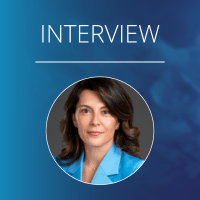What is Treasury in banking?
By Aastha Tomar
23-02-2023 | Aastha Tomar | treasuryXL | LinkedIn |
After two years of hiatus, here I am again to write for the team I love the most and the team whom I owe the most in Netherlands. treasuryXL has a special place in my heart, I got linked with them as soon as I shifted to Netherlands in 2019 and since then they have been a constant source of support for me.
So here I am again with my favorite topic – Bank Treasury 😊

Introduction
Back in 2010 when I got a chance to do an internship at one of India’s biggest corporate Treasury it set a path for me for years to come. The soundproof dealing room where only authorized officials were allowed to enter, the big screens, the constant ringing recorded phones, the fast-moving exchange rates, and people making quick decisions based on market movements made me fascinated. There were big TV screens everywhere so that the team didn’t miss the latest news in the world.
Fast forward to 2015, I finally joined a Treasury team 😊. As a founding member of a Bank Treasury team, there was nothing more rewarding than building it from scratch and watching it grow exponentially over the next four years. In 2019, I left India for the Netherlands.
Now, let’s move on to our topic for today: What is Treasury in Banking?
Bank Treasury
For me personally, each Treasury function is similar, whether it’s a corporate Treasury or a Bank Treasury. Once you understand the concept of one, you can easily apply it to the other. The Treasury team is a critical part of a bank’s wholesale banking department and plays a vital role in maintaining a healthy P&L.
The Treasury Team is responsible for:
- Ensuring that the bank’s books balance daily and that there is sufficient cash to settle outstanding contracts, with any excess cash lent out at the best available rates.
- Balancing and managing daily cash flows, investments, debt profiles, bank liquidity, reserve management, asset/liability management, risk management, and more.
- Providing Treasury solutions to the bank’s customers, such as Corporate Treasuries.
In short, Bank Treasury is the backbone of the organization. They ensure that the bank functions in compliance with all banking regulations, and is not caught off guard during any crisis, while also aiming for maximum return on investment.
Bank Treasury is a massive and complex topic. Today, we will focus on explaining the roles that a Treasury team plays in a bank. We may cover other topics in the future, such as job profiles, education requirements, and how to land a job in Bank Treasury.
Roles a Treasury team plays in a bank
-
I. Asset Liability Management (ALM)
A bank’s assets are the ones owned by the bank, such as cash, government securities, loans (earning interest), money market instruments, equities, and reserves, etc. Liabilities refer to debt obligations, like borrowings from other banks/financial institutions, market borrowings (bonds), etc. Intuitively, anyone will try to obtain a higher yield while keeping borrowing costs very low. But there are so many other considerations, and this is where the ALM team comes into the picture. They ensure that the mismatch between the tenor, interest rates, floating/fixed rates, amount of these assets, and liabilities is minimized with limited risk. The team is in constant action so that the cheaper short-term borrowings and excellent long-term interest-paying loans mismatch only to a limit so that banks remain sturdy in a scenario where liquidity dries up immediately.
-
II. Balance Sheet Management (BSM)
In response to the financial crisis of 2008, Basel III norms were introduced, which had more stringent regulations than the previous two norms. They aimed to strengthen banking systems where banks were undercapitalized, overleveraged, and depended mostly on short-term funding. They came up with capital adequacy ratios, leverage, and liquidity coverage ratios that a bank must have. A bank’s treasury has a crucial role to play here in balance sheet management by suggesting which currencies and terms are favorable from a funding perspective and which assets are required to meet various regulatory targets.
-
III. Trading and Hedging
All I can say here is that if you have a strong heart, only then should you think of this function. You must always be on your toes, be on top of what is happening in the world, and how each news is moving the interest rates/exchange rates, and what you should do to minimize the risk. If you are in a bank that has liabilities in one currency and assets in another, then you must make sure that you do not land in a situation where the asset currency becomes weaker, which may distort the risk and reduce the profitability of the bank. For this, you have derivative hedges – different types of hedges (swaps, options, structured products) that I explained in my previous articles. You also need to do spot transactions where you buy and sell currency on a spot basis for the immediate needs (payment obligations, etc.) of the bank.
This team ensures that they take advantage of daily market variations through various trading activities. They hedge open positions (for mitigating exchange rate/interest rate risk), execute back-to-back deals for corporate treasuries, perform merchant transactions, trade in currency futures, hedge the bank’s balance sheet, and transact in interest rate futures.
-
IV. Treasury Operations
The operations team is very crucial when it comes to a bank’s adherence to regulations and making sure that all the legal documentation is documented for audit purposes. They liaise with the different teams to ensure that the processes are followed according to the rules and regulations. They are the ones responsible for reporting, ensuring SWIFT payments, confirming deals, settling and confirming treasury transactions in a timely manner. They cover the settlement and squaring of nostro accounts, that is, the accounts banks have with other banks, alongside collateral movements, and accounts with the Central Bank.
In addition to these, each Bank Treasury can be a bit different in structure from others. For example, the Debt Capital Markets team, which is responsible for raising debt from the market through fixed income products, may or may not be a part of the Bank Treasury. The Treasury Sales team may do both hedge and business development, or only business development, and the hedges/structuring may be done by dealers in the Dealing room. The project finance team, which manages financing of projects including credit/risk management, may or may not be a part of Bank Treasury. But all in all, Treasury as a concept is massive and is definitely one of the high-risk and high-reward professions, where every second you have to be in action, and the immense learning that comes with it is unparalleled.
Conclusion
In summary, the treasury function is an integral aspect of banking institutions. It encompasses managing financial assets and liabilities, ensuring sufficient liquidity, and capitalizing on market opportunities to maximize profitability. Treasury management requires a combination of analytical skills, financial expertise, and a deep understanding of the economic landscape which can be easily developed by keeping a track of the latest happenings in the world, how the interest rates are moving, how each news impacts the interest rates/ exchange rates and keeping abreast of regulatory changes etc. Moreover, regulatory and risk management considerations are critical factors in shaping the treasury function. Banks must balance profitability with safety and soundness. Ultimately, the treasury function is a vital element of modern banking and plays a crucial role in maintaining the stability of the financial system.
AUTHOR
Aastha is a finance professional with more than a decade of experience across FP&A, Treasury and Investment Banking. She is currently working in FP&A team of an American Chemical company is Zuid, Amsterdam. Prior to working in Netherlands Aastha has been a founder member of FX treasury team of a bank where she was responsible for FX and hedging for corporate customers. She has also worked in Debt Capital Markets team of an Indian investment bank and has single handedly led many successful investment banking transactions.
Aastha is an Electrical Engineer and master’s in finance, both from premier institutes in India. She is always open for new challenges in finance domain, where she can add value and use her previous experience in investment banking, debt capital markets, Forex, Treasury and Financial Planning & Analysis .
In her free time Aastha loves to write blogs/ articles on various topic ranging from Treasury, leadership, life experiences and sustainability.
Click to see her profile and previous blogs here.
Thanks for reading!
Can’t get enough? Check out these latest items
 https://treasuryxl.com/wp-content/uploads/2016/04/Logo-Jacobs-Douwe-Egberts-500x500-e1468925512761.jpg
200
200
treasuryXL
https://treasuryxl.com/wp-content/uploads/2018/07/treasuryXL-logo-300x56.png
treasuryXL2024-04-25 11:12:522024-04-25 11:12:52Global Treasury and Data Analytics Intern @ Jacobs Douwe Egberts
https://treasuryxl.com/wp-content/uploads/2016/04/Logo-Jacobs-Douwe-Egberts-500x500-e1468925512761.jpg
200
200
treasuryXL
https://treasuryxl.com/wp-content/uploads/2018/07/treasuryXL-logo-300x56.png
treasuryXL2024-04-25 11:12:522024-04-25 11:12:52Global Treasury and Data Analytics Intern @ Jacobs Douwe Egberts https://treasuryxl.com/wp-content/uploads/2024/04/TIS-BLOGS-featured-2.png
200
200
treasuryXL
https://treasuryxl.com/wp-content/uploads/2018/07/treasuryXL-logo-300x56.png
treasuryXL2024-04-25 10:00:542024-04-22 09:51:28TIS Spring Magazine
https://treasuryxl.com/wp-content/uploads/2024/04/TIS-BLOGS-featured-2.png
200
200
treasuryXL
https://treasuryxl.com/wp-content/uploads/2018/07/treasuryXL-logo-300x56.png
treasuryXL2024-04-25 10:00:542024-04-22 09:51:28TIS Spring Magazine https://treasuryxl.com/wp-content/uploads/2024/04/Lanschot-kempen.png
200
200
treasuryXL
https://treasuryxl.com/wp-content/uploads/2018/07/treasuryXL-logo-300x56.png
treasuryXL2024-04-25 09:45:472024-04-25 09:45:47Treasury Funding Specialist @ van Lanschot Kempen
https://treasuryxl.com/wp-content/uploads/2024/04/Lanschot-kempen.png
200
200
treasuryXL
https://treasuryxl.com/wp-content/uploads/2018/07/treasuryXL-logo-300x56.png
treasuryXL2024-04-25 09:45:472024-04-25 09:45:47Treasury Funding Specialist @ van Lanschot Kempen https://treasuryxl.com/wp-content/uploads/2024/04/Paul-Expert-featured.png
200
200
treasuryXL
https://treasuryxl.com/wp-content/uploads/2018/07/treasuryXL-logo-300x56.png
treasuryXL2024-04-25 07:00:022024-04-17 11:56:47OECD BEPS and Transfer Pricing – Differentiating In-House Bank interest depending on Balance Sheet
https://treasuryxl.com/wp-content/uploads/2024/04/Paul-Expert-featured.png
200
200
treasuryXL
https://treasuryxl.com/wp-content/uploads/2018/07/treasuryXL-logo-300x56.png
treasuryXL2024-04-25 07:00:022024-04-17 11:56:47OECD BEPS and Transfer Pricing – Differentiating In-House Bank interest depending on Balance Sheet https://treasuryxl.com/wp-content/uploads/2024/03/Copy-of-Cobase-Template_BLOGS-featured.png
200
200
treasuryXL
https://treasuryxl.com/wp-content/uploads/2018/07/treasuryXL-logo-300x56.png
treasuryXL2024-04-24 07:00:382024-04-17 11:43:06Strategizing Finance Projects: Setting Priorities for Success
https://treasuryxl.com/wp-content/uploads/2024/03/Copy-of-Cobase-Template_BLOGS-featured.png
200
200
treasuryXL
https://treasuryxl.com/wp-content/uploads/2018/07/treasuryXL-logo-300x56.png
treasuryXL2024-04-24 07:00:382024-04-17 11:43:06Strategizing Finance Projects: Setting Priorities for Success https://treasuryxl.com/wp-content/uploads/2024/02/Francois-Template_BLOGS-Expert-featured-1.png
200
200
treasuryXL
https://treasuryxl.com/wp-content/uploads/2018/07/treasuryXL-logo-300x56.png
treasuryXL2024-04-23 07:00:502024-04-17 08:29:08RTGS, Instant Payments and the impact on Open Banking
https://treasuryxl.com/wp-content/uploads/2024/02/Francois-Template_BLOGS-Expert-featured-1.png
200
200
treasuryXL
https://treasuryxl.com/wp-content/uploads/2018/07/treasuryXL-logo-300x56.png
treasuryXL2024-04-23 07:00:502024-04-17 08:29:08RTGS, Instant Payments and the impact on Open Banking https://treasuryxl.com/wp-content/uploads/2024/04/Patricia-featured.png
200
200
treasuryXL
https://treasuryxl.com/wp-content/uploads/2018/07/treasuryXL-logo-300x56.png
treasuryXL2024-04-22 07:00:232024-04-15 06:28:07Interview | 5 questions for Patrícia Baptista Nabiço, Seasoned Treasury Professional
https://treasuryxl.com/wp-content/uploads/2024/04/Patricia-featured.png
200
200
treasuryXL
https://treasuryxl.com/wp-content/uploads/2018/07/treasuryXL-logo-300x56.png
treasuryXL2024-04-22 07:00:232024-04-15 06:28:07Interview | 5 questions for Patrícia Baptista Nabiço, Seasoned Treasury Professional https://treasuryxl.com/wp-content/uploads/2024/01/Template_VACANCY-featured.png
200
200
treasuryXL
https://treasuryxl.com/wp-content/uploads/2018/07/treasuryXL-logo-300x56.png
treasuryXL2024-04-19 07:00:432024-04-18 15:27:36Vacancy | Treasury Analyst – Luxembourg
https://treasuryxl.com/wp-content/uploads/2024/01/Template_VACANCY-featured.png
200
200
treasuryXL
https://treasuryxl.com/wp-content/uploads/2018/07/treasuryXL-logo-300x56.png
treasuryXL2024-04-19 07:00:432024-04-18 15:27:36Vacancy | Treasury Analyst – Luxembourg https://treasuryxl.com/wp-content/uploads/2024/04/Steven-interview.png
200
200
treasuryXL
https://treasuryxl.com/wp-content/uploads/2018/07/treasuryXL-logo-300x56.png
treasuryXL2024-04-18 07:00:072024-04-18 10:08:28Why Steven decided to explore the World of Treasury
https://treasuryxl.com/wp-content/uploads/2024/04/Steven-interview.png
200
200
treasuryXL
https://treasuryxl.com/wp-content/uploads/2018/07/treasuryXL-logo-300x56.png
treasuryXL2024-04-18 07:00:072024-04-18 10:08:28Why Steven decided to explore the World of Treasury

